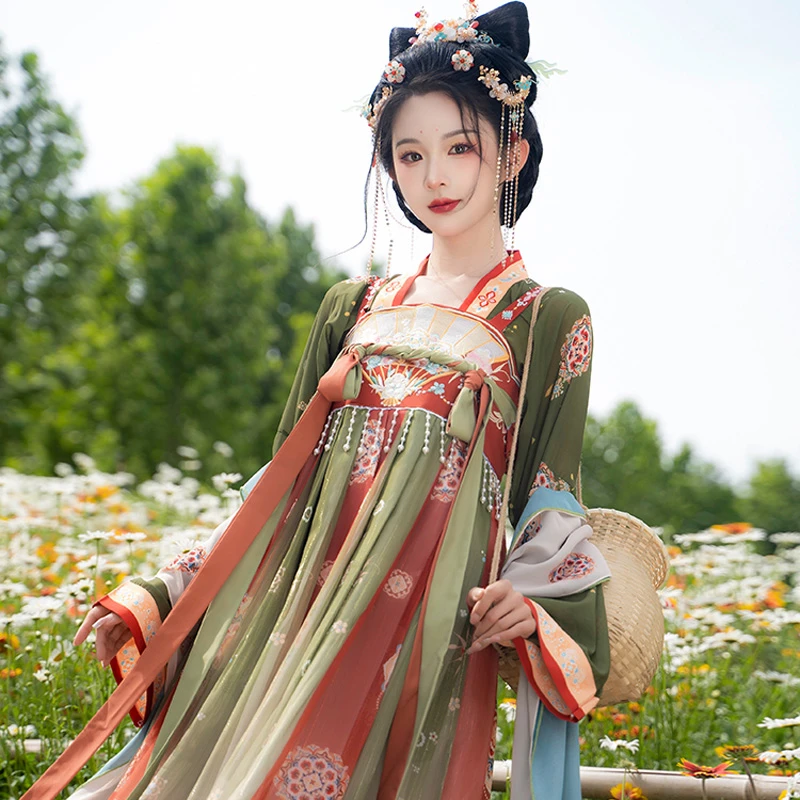Hanfu's Modern Renaissance: Ancient Garments Find New Life in Contemporary Fashion

For centuries, Hanfu, the traditional clothing of the Han Chinese, lay largely forgotten, relegated to historical dramas and cultural performances. But in recent years, a vibrant and growing movement has propelled Hanfu back into the spotlight, not as a relic of the past, but as a dynamic and evolving element of modern fashion. From bustling city streets to online communities, Hanfu is experiencing a remarkable renaissance, captivating a new generation and sparking a global interest in Chinese culture.
The term "Hanfu" encompasses a wide range of styles and designs, reflecting the rich tapestry of Chinese history. Characterized by flowing robes, wide sleeves, and intricate embroidery, Hanfu garments varied significantly across dynasties and social classes. While historical accuracy remains important to many enthusiasts, the modern Hanfu movement is characterized by a spirit of innovation and adaptation.
One of the key drivers of Hanfu's resurgence is the rise of social media. Platforms like TikTok, Instagram, and Bilibili have become virtual runways, showcasing stunning Hanfu outfits and fostering a vibrant online community. Enthusiasts share styling tips, tutorials, and information about Hanfu history, creating a welcoming space for newcomers to explore and appreciate the beauty of these garments. The hashtag #Hanfu has garnered millions of views, demonstrating the widespread appeal of this trend.

Beyond social media, Hanfu is increasingly visible in everyday life. Young people are incorporating Hanfu elements into their daily wardrobes, pairing traditional tops with modern skirts or jeans, or opting for simplified, more practical Hanfu designs. This "modern Hanfu" approach allows individuals to express their cultural identity while remaining comfortable and stylish in contemporary settings.
The appeal of modern Hanfu extends beyond aesthetics. For many, wearing Hanfu is a way to connect with their heritage and express their pride in Chinese culture. In a globalized world, Hanfu serves as a tangible link to the past, offering a sense of belonging and cultural identity. This is particularly significant for younger generations who are seeking to define their place in the world.
The growing popularity of Hanfu has also spurred the growth of a thriving Hanfu industry. Designers are creating innovative Hanfu styles that blend traditional aesthetics with modern sensibilities, using contemporary fabrics and incorporating elements from other cultures. Small businesses and independent artisans are producing high-quality Hanfu garments and accessories, catering to the diverse tastes of Hanfu enthusiasts.
However, the Hanfu movement is not without its challenges. Debates often arise regarding historical accuracy and cultural appropriation. hanfu way argue that modern Hanfu designs deviate too far from historical precedents, while others criticize the use of Hanfu by individuals who are not of Han Chinese descent. These discussions highlight the complex and evolving nature of cultural identity and the importance of respectful engagement with traditions.
Despite these challenges, the future of Hanfu looks bright. The movement's growing popularity and the increasing availability of Hanfu garments and accessories suggest that this trend is here to stay. As Hanfu continues to evolve and adapt to modern sensibilities, it is poised to become an increasingly visible and influential force in the global fashion landscape.
The modern Hanfu renaissance is more than just a fashion trend; it is a cultural phenomenon that reflects a growing interest in Chinese history and identity. By embracing both tradition and innovation, the Hanfu movement is breathing new life into ancient garments and creating a vibrant and dynamic expression of Chinese culture in the 21st century. Whether worn for special occasions or incorporated into everyday outfits, Hanfu is empowering individuals to connect with their heritage, express their creativity, and celebrate the enduring beauty of Chinese culture.
